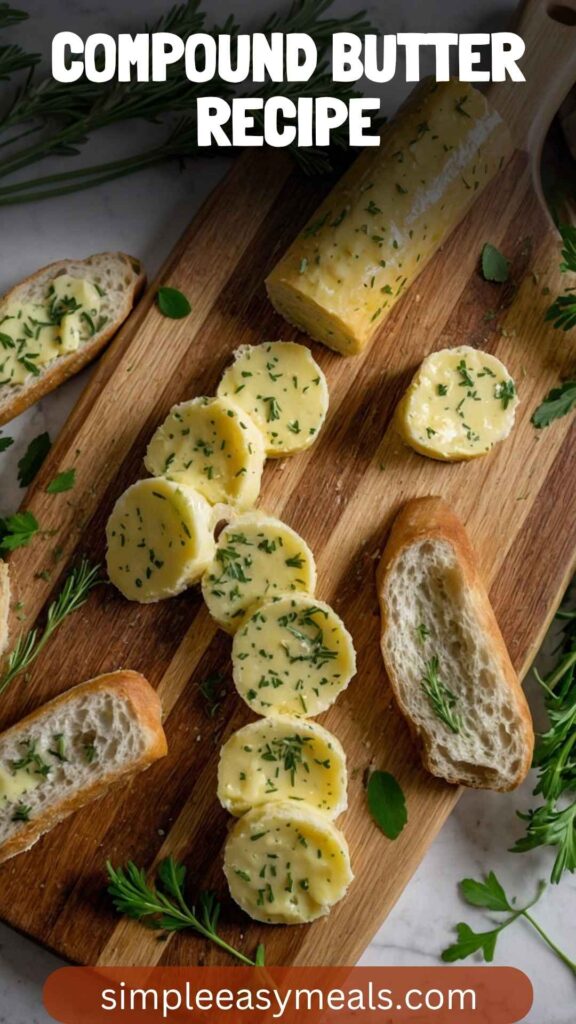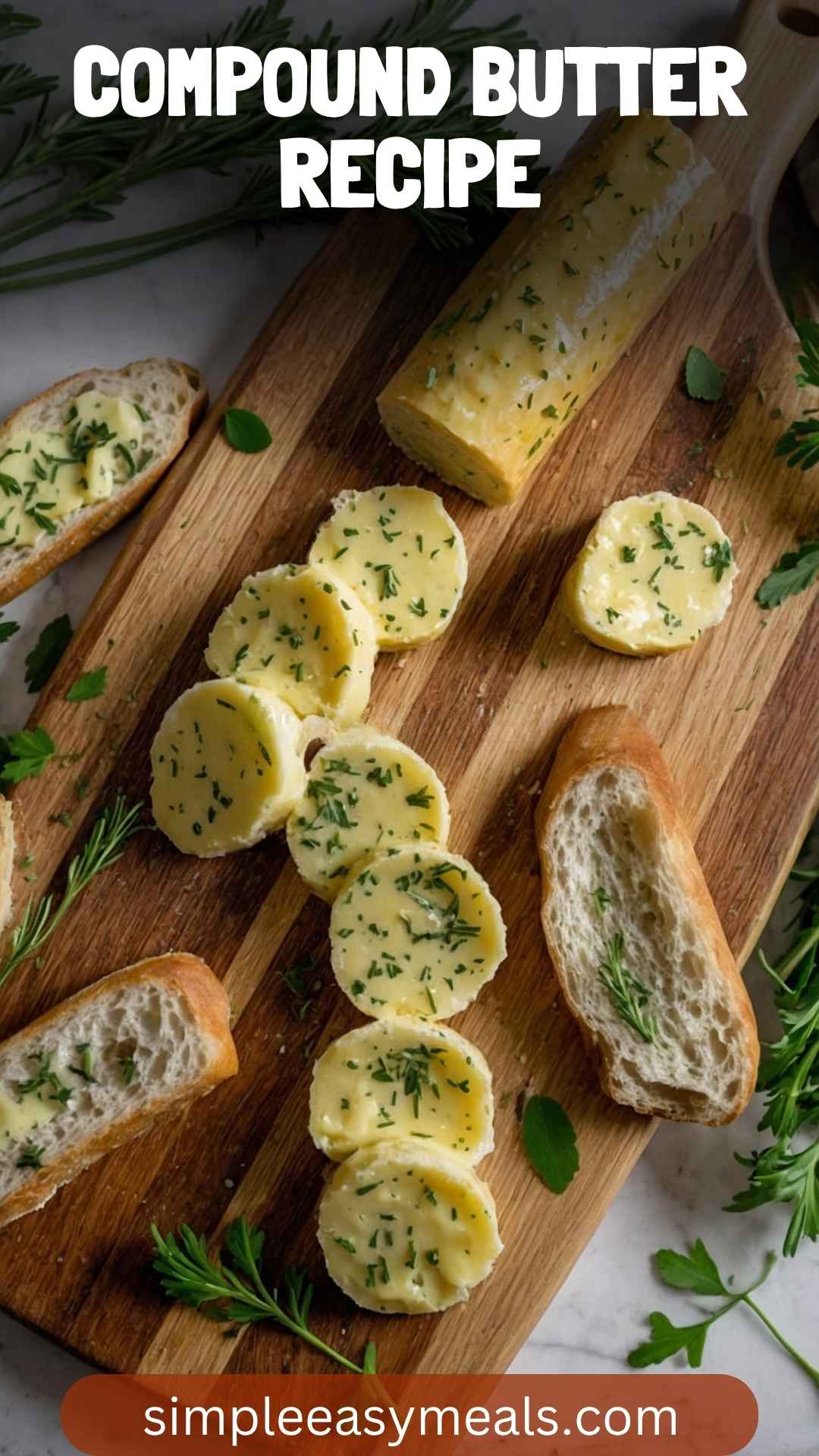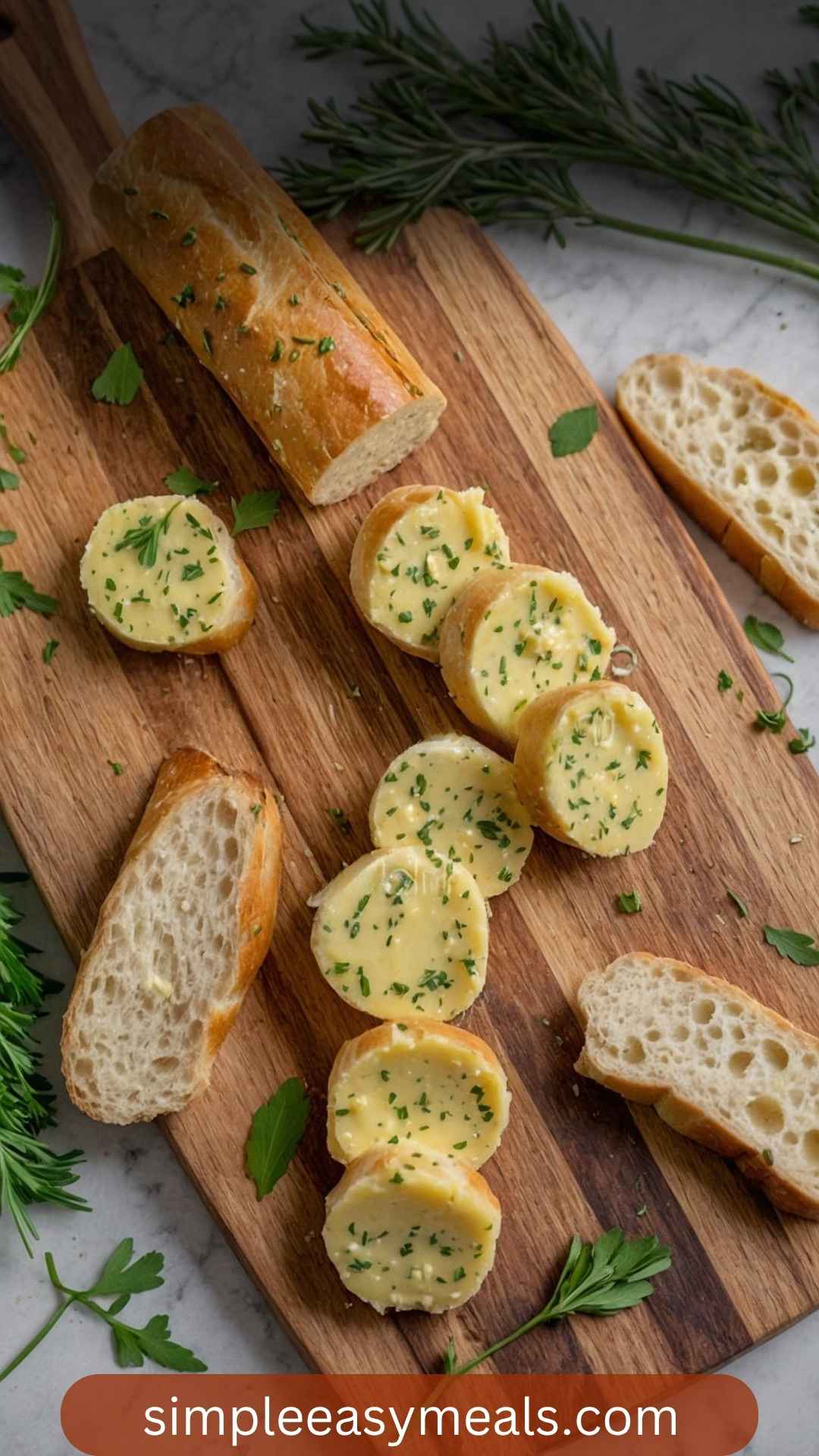If you're gracing your kitchen with the delightful creation of compound butter, you're in for a treat. This compound butter is not just a condiment; it’s an upgrade to your dining experience.
Picture this: you're sitting down to a perfectly grilled steak, a fresh loaf of crusty bread, or sautéed vegetables sprinkled with your exquisite compound butter. The flavors marry perfectly, elevating each bite.
Whether it’s with fresh seafood, a hearty baked potato, or even drizzled atop a warm bowl of popcorn during movie night, compound butter brings a luxurious touch without demanding much of your time. Ready to dive in? Let’s get started!
What is Compound Butter?
Compound butter is simply softened butter mixed with additional ingredients. It can include herbs, spices, cheeses, or any flavorings you fancy. This versatile mixture can be served cold or slightly warmed, melting gorgeously over hot dishes.
Traditional uses include seasoning meats, finishing sauces, or simply spreading over bread. It’s a culinary treasure that offers flavor in a convenient package.
Why This Recipe Works?
This recipe works for several reasons. First, compound butter requires minimal effort with maximum output. You don’t need a PhD in culinary arts to whip it up. Secondly, it’s highly customizable.
You're in control of the ingredients, ensuring they suit your palate and dietary needs. Also, softened butter is an excellent base because it carries flavors exceptionally well. The process of creating compound butter allows for creativity; it can enhance any meal effortlessly.
What You'll Need to Make This Dish?
Before jumping into the delightful process, gather your ingredients. Here’s what you’ll need:
- Unsalted Butter: 1 cup (softened)
- Fresh Herbs: About ½ cup (your favorite ones, like parsley, chives, or rosemary)
- Garlic: 2-3 cloves (minced for that mouthwatering aroma)
- Zest of Lemon or Lime: For a little zing
- Sea Salt: To taste, enhancing all those lovely flavors.
How to Make Compound Butter?
Creating compound butter is simple yet rewarding. The steps are straightforward, ensuring that anyone can join in on the fun. Next, I’ll walk you through the process step-by-step.
Step 1: Soften the Butter
Begin with one cup of unsalted butter. The first thing you need to do is let it soften. You want your butter at room temperature, which makes mixing a breeze.
If you’re short on time, you can cut the butter into small cubes to speed up the softening process.
Step 2: Prepare Your Flavorings
While the butter is softening, it’s the perfect opportunity to prepare your flavorings. Wash your herbs thoroughly.
This is important to remove any excess dirt. Pat them dry, and then mince them finely. Garlic lovers, rejoice! Mince your garlic cloves as well.
Step 3: Combine Ingredients
Once your butter is soft and your herbs and garlic are ready, it’s time to mix everything together. In a bowl, add the softened butter, minced garlic, chopped herbs, and lemon or lime zest.
Season lightly with sea salt. Use a fork or spatula to mix everything until well blended. You want to see a lovely interplay of colors.
Step 4: Mold the Butter
To store your compound butter, it helps to form it into a log or into a container. If you’re making a log, lay out a piece of plastic wrap on a flat surface. Spoon the mixture onto the wrap and shape it into a log.
Roll the wrap tightly around the butter and twist the ends to seal it. This way, it retains its shape when you need to slice off a piece.
Step 5: Refrigerate or Freeze
Place your molded butter in the refrigerator for at least an hour to firm up. If you want to store it for longer, you can pop it into the freezer. Just remember, when you need that flavor boost, you can pull it out, slice off what you need, and return the rest to storage!
Tips for Perfect Compound Butter
- Experiment with Flavors: Don’t hesitate to try different herbs and spices. Thyme, basil, or even a touch of chili powder can bring your butter to life.
- Texture Matters: Make sure your butter is room temperature. Cold butter won’t mix well and will leave lumps. No one wants a chunky slab of butter.
- Keep it Fresh: If you're using fresh herbs, make sure to use them within a week or two. Dried herbs can be great substitutes that last longer.
- Label and Date: If you’re making several flavors, label them. Trust me, you don’t want to confuse garlic butter with sweet cinnamon butter!
- Use Quality Ingredients: The quality of your butter and herbs will significantly impact the final flavor. Go for organic and fresh if possible.
How to Store Leftovers?
If you happen to have any left over (though that rarely happens!), compound butter can last up to two weeks in the refrigerator and can be frozen for several months. Just remember to wrap it tightly to avoid any freezer burn.
I always recommend cutting it into smaller portions before freezing, making it easier to thaw just what you need.
Nutrition Information
For each teaspoon of compound butter, there are approximately:
- Calories: 30
- Fat: 3g
- Saturated Fat: 2g
- Cholesterol: 10mg
- Sodium: Varies based on added salt
This is a simple estimation, but keep in mind that the actual nutrition may vary based on the ingredients you choose to add!
How Would I Recommend Serving Compound Butter Recipe?
Here are a few suggestions on how to serve your compound butter that will surely impress your guests:
- On Grilled Meat: Top a grilled steak or chicken breast with a slice of compound butter just before serving. The heat will melt the butter, creating a sauce that runs deliciously over your meat.
- With Fresh Bread: Spread it generously on warm, crusty bread. The flavor will make your taste buds dance while enjoying a simple family dinner or casual get-together.
- Sautéed Vegetables: Toss soft vegetables like zucchini or asparagus with melted compound butter. They will absorb that savory flavor beautifully.
- Over Baked Potatoes: Scoop some of that compound butter over a steaming baked potato for a rich and flavorful burst. Add toppings like sour cream, cheese, or chives for an extra layer of yumminess.
What Alternatives Can You Use for the Ingredients If Not Available?
Life happens. If you find yourself without the specific ingredients, here are some viable substitutions:
- Dairy-Free Butter: Use a plant-based butter if you have dairy restrictions. Brands like Earth Balance work well here.
- Frozen Herbs: If fresh herbs are unavailable, opt for frozen ones. Just remember to use less, as frozen herbs tend to have a more concentrated flavor.
- Onion Powder: In place of fresh garlic, use garlic powder or onion powder, albeit sparingly, to help avoid overpowering flavors.
- Lime Zest: In lieu of lemon zest, lime zest can add a uniquely fresh note, especially if you’re aiming for a slightly different flavor profile.
Conclusion
In the grand tapestry of cooking, compound butter is a thread that adds richness and depth to your dishes. It’s about transforming the mundane into the extraordinary with a bit of creativity and simplicity. With just some butter and a handful of flavorful ingredients, you can create a versatile condiment that will impress everyone at your table.
Try making your own batch at home, experiment with flavors, and don’t shy away from sharing your delicious creations with loved ones.
Whether you’re dolloping it onto grilled meats, melting it over vegetables, or spreading it on warm bread, compound butter is an effortless way to elevate your meals. So, roll up your sleeves and get ready to enjoy the flavors. Happy cooking!
You’ll also like the following recipes!




